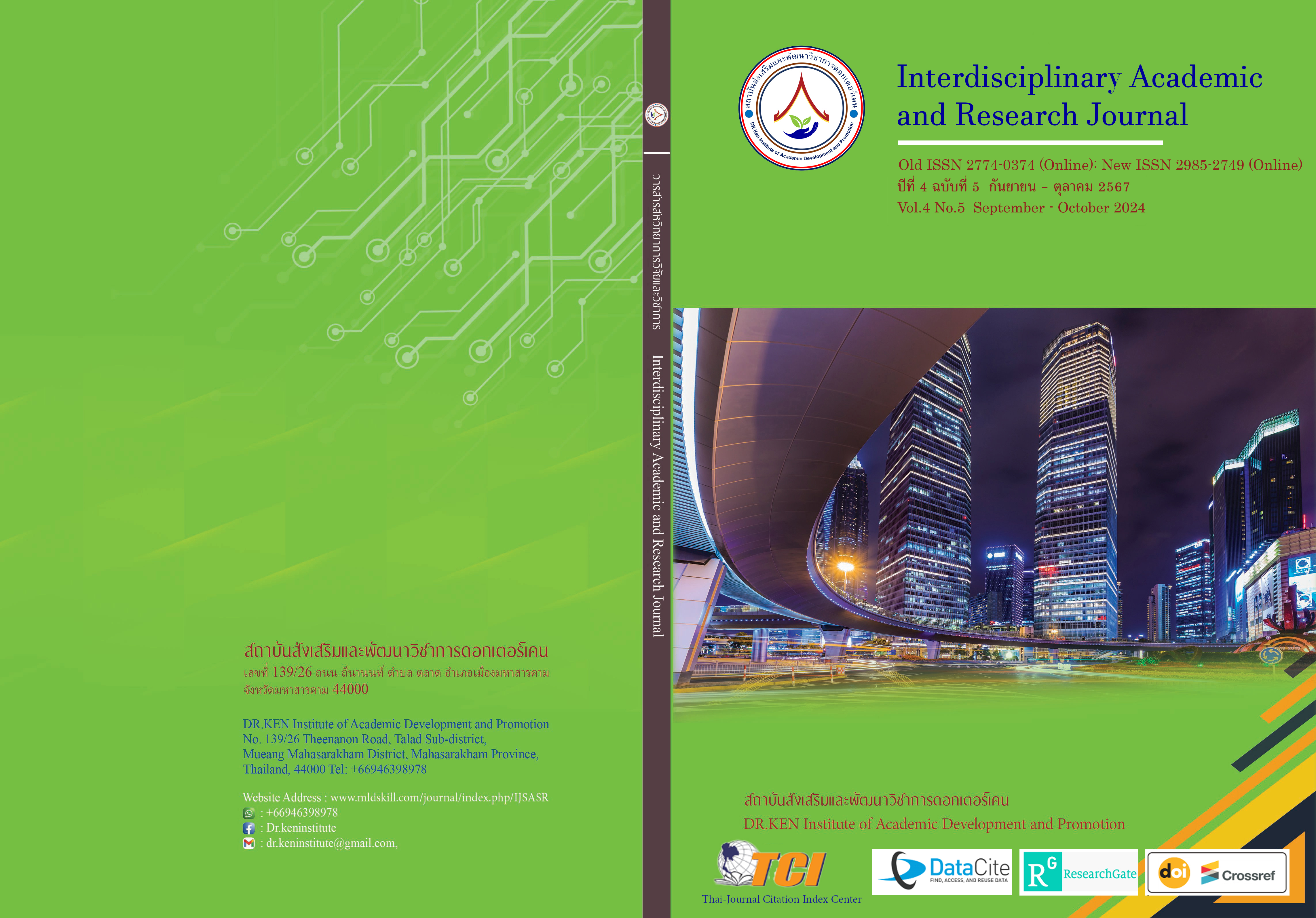Operating Efficiency of the Aviation Industry in Thailand: Perspective from Executives
DOI:
https://doi.org/10.60027/iarj.2024.281712Keywords:
Operating Efficienc;, Ground Operations; , Crew Management; , Maintenance; , Regulatory Compliance; , Airlines in ThailandAbstract
Background and Aims: Strategies for airlines to enhance operational efficiency in resource management to maximize benefits, including the use of technology to reduce operating time and improve customer service processes, personnel management, and aircraft utilization, contribute to the improvement of internal efficiency. Furthermore, airlines are required to adhere to stringent aviation laws to prevent safety and legal issues. This study seeks to examine the operational strategies of airlines in Thailand.
Methodology: This research was conducted through in-depth interviews with senior executives from airlines and allied aviation sectors. The acquired data were evaluated both contextually and comparatively to explain the functions of various operational strategies, including ground operations, crew management, maintenance, and regulatory compliance.
Results: The findings indicate that efficient operational strategies significantly enhance the operational efficiency and competitiveness of airlines in Thailand. Efficient ground service management enhances customer satisfaction and minimizes wait times. Effective management of training and rest periods for crew members enhances operational preparedness and safety. Preventive maintenance and the implementation of new technology mitigate operational hazards and minimize flight cancellations. Adhering according to the laws and regulations of the Civil Aviation Authority of Thailand enhances safety and fosters passenger confidence. Executives highlighted difficulties in executing strategies, including a lack of competent workers and the need to adapt to technological and regulatory changes.
Conclusion: These findings Critical tactics from the executives' viewpoint indicate that prompt, timely ground services and the professionalism of crew members influence client happiness. Utilizing technology in maintenance mitigates risks and decreases flight cancellations. Adherence to regulations influences passenger safety and trust. The study's conclusions can serve as a roadmap for airlines in Thailand looking to boost productivity, foster expansion, and become more competitive on the international scene.
References
Ascó, A., Atkin, J. A., & Burke, E. K. (2012). An evolutionary algorithm for the over-constrained airport baggage sorting station assignment problem. In Asia-Pacific Conference on Simulated Evolution and Learning, Berlin, Heidelberg: Springer Berlin Heidelberg, pp. 32-41.
Bangkok Airways. (2018). Risk Factors, https://ba-th.listedcompany.com/misc/cg/20180523-ba-cg-riskfactors-th.pdf
Barbosa, P. A. R. (2023). Compliance and its Contributions to Safety at Work. Ius Novum, 17(3), 47-56. https://doi.org/10.2478/in-2023-0021
Diepen, G, Pieters, B.F.I, van den Akker, J.M., & Hoogeveen, J.A. (2013). Robust planning of airport platform buses, Computers & Operations Research, 40(3), 747-757.
Foong, J. J., O’Connell, J. F., Warnock-Smith, D., & Efthymiou, M. (2023). A product and organizational architecture analysis of the performance of Southeast Asian airlines. Journal of Air Transport Management. 107, 102358. https://dx.doi.org/10.1016/j.jairtraman.2023.102358
Helmold, M. (2023). Total Quality Management (TQM). In Management for Professionals (pp. 27-41). https://doi.org/10.1007/978-3-031-30089-9_4
Law, C. (2017). The study of customer relationship management in Thai airline industry: A case of Thai travelers in Thailand. Journal of Airline and Airport Management, 7(1). https://dx.doi.org/10.3926/JAIRM.86
Okoro, O. C., Zaliskyi, M., Dmytriiev, S., Solomentsev, O., & Sribna, O. (2022). Optimization of maintenance task interval of aircraft systems. International Journal of Computer Network and Information Security, 11(2), 77-89. DOI: 10.5815/ijcnis.2022.02.07
Palchyk, I., Kuzheliev, M., & Zhelikhovska, M. (2022). Operational management as a basis for the formation of the enterprise’s competitiveness. Ukrainian Journal of Applied Economics and Technology, 7(2), 246–252. https://doi.org/10.36887/2415-8453-2022-2-30
Prasatkeaw, T. (2021). Learned from Business-Driven Strategies of Aviation Industry in Thailand in Economic Crisis: A Case Study of Thai Airways International Public Company Limited. Journal of Business & Industrial Development, 10(3), 4-13. https://doi.org/10.14416/j.bid.2021.03.017
Sakthidharan, V., & Sivaraman, S. (2018). Impact of operating cost components on airline efficiency in India: A DEA approach. Asia Pacific Management Review, 23(4), 258-267.
Saranga, H., & Nagpal, R. (2016). Drivers of operational efficiency and its impact on market performance in the Indian Airline industry. Journal of Air Transport Management, 53, 165-176.
Teymouri, A., Sahebi, H., & Pishvaee, M. (2023). Airline operational crew-aircraft planning considering revenue management: A robust optimization model under disruption. International Journal of Industrial Engineering Computations, 14(2), 381-402.
Tiarto, T. (2017). Analysis of Lion Air’s competitive strategy in business competition for scheduled air transport service in Indonesia. In Global Research on Sustainable Transport (GROST 2017) (pp. 194-210). Atlantis Press.
Volkova, O. V., & Troian, M. V. (2021). Theoretical aspects of strategic management of industrial enterprises. Russian Journal of Industrial Economics, 14(2), 196-205. https://doi.org/10.17073/2072-1633-2021-2-196-205
Wensveen, J. G. (2021). Air transportation: A management perspective (9th ed.). Routledge.
Downloads
Published
How to Cite
Issue
Section
License
Copyright (c) 2024 Interdisciplinary Academic and Research Journal

This work is licensed under a Creative Commons Attribution-NonCommercial-NoDerivatives 4.0 International License.
Copyright on any article in the Interdisciplinary Academic and Research Journal is retained by the author(s) under the under the Creative Commons Attribution-NonCommercial-NoDerivatives 4.0 International License. Permission to use text, content, images, etc. of publication. Any user to read, download, copy, distribute, print, search, or link to the full texts of articles, crawl them for indexing, pass them as data to software, or use them for any other lawful purpose. But do not use it for commercial use or with the intent to benefit any business.
















.png)


